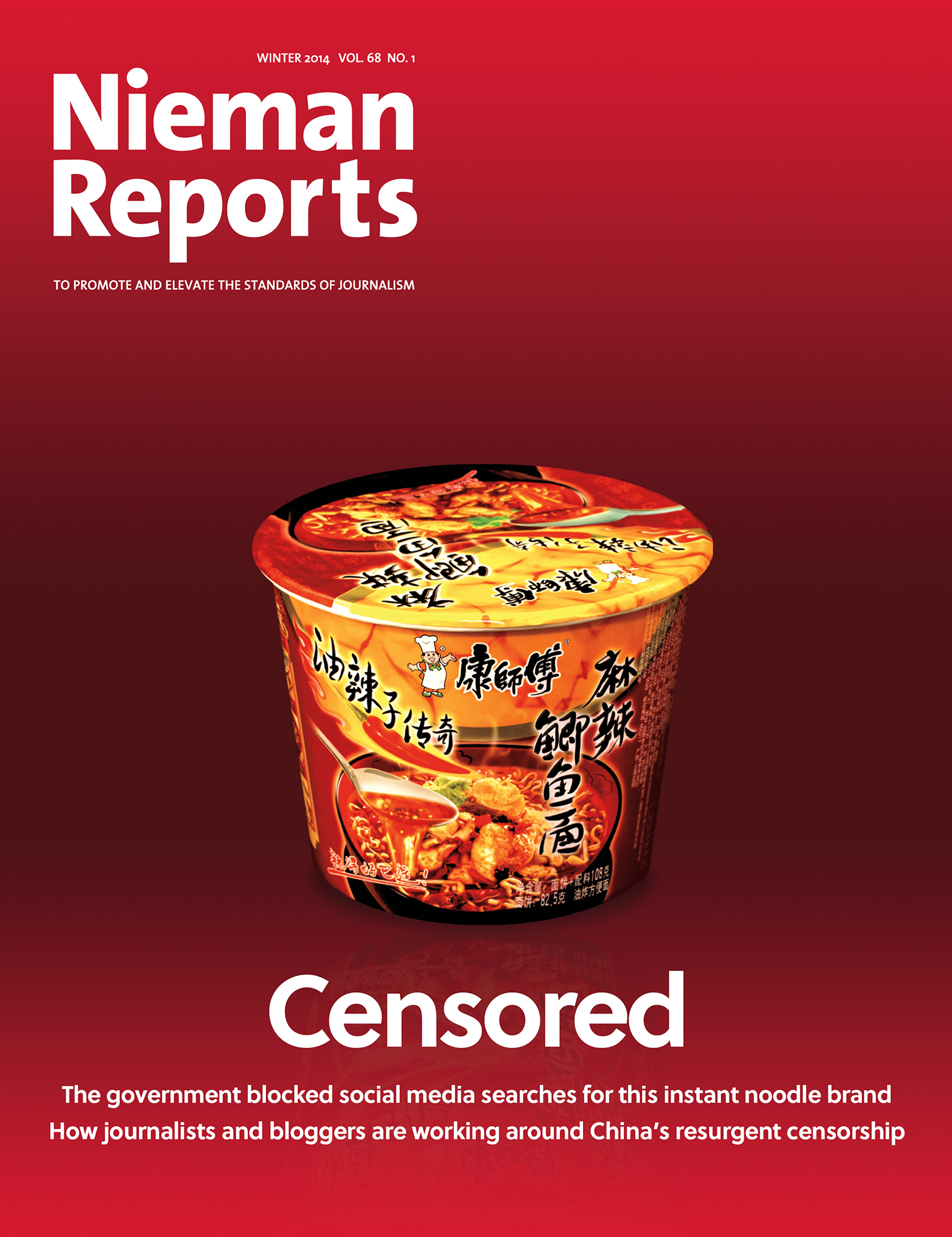
The concentration of Hispanics in major U.S. cities, such as Los Angeles, the site of a May Day rally last year, gives them outsized market influence
In 1808, as Napoleon’s forces marched across southern Spain, a group of Spanish exiles set up shop across the Atlantic in New Orleans. There, they capitalized on Louisiana’s newly acquired First Amendment rights and churned out a four-page bilingual record of events back home, blasting the French occupation.
El Misisipí, the United States’ first Spanish-language newspaper, lasted only two years, but it inaugurated more than two centuries of robust Hispanic media. From exiled Cuban poet José Martí’s demand in the pages of Patria that Spain give his island independence to La Opinión’s coverage of the 1943 Zoot Suit Riots in Los Angeles to radio host Piolín’s on-air promotion of the 2006 national immigrant marches, Spanish-language media have served as a voice and a life vessel for millions of immigrants and exiles in the United States.
For nearly as long as Hispanic media have existed, there has been an invisible wall between what was written on their pages (and later spoken on their newscasts and posted on their blogs) and what was seen and heard in the general market. Today that wall is rapidly crumbling. Changing demographics in the U.S. and global technological advances have induced once segregated markets to begin blending. Having covered Hispanic media for more than half a decade, I am often asked about its future. Increasingly, my answer is this: The future of Hispanic media is the future of U.S. media.
The numbers tell a good chunk of the story. The nearly 52 million Hispanics in the U.S. represent just 17 percent of the nation’s population. Yet they are heavily concentrated in the nation’s largest cities, including Los Angeles, New York, Chicago and Miami, giving them outsized market influence. In addition, two-thirds of these Latinos are native born, meaning English is their dominant, if not their first, language.
So what does this new blending look like? One example is the English-language Fusion cable and digital network, a collaboration between Univision and ABC News that launched in October. As I wrote for The Associated Press, Fusion is a bit of a grab bag: “Think Comedy Central, the hipster online magazine Vice.com, ABC and Univision, all in one.”

Cesar Conde, an executive vice president at NBCUniversal, is among the few Hispanics who hold top jobs in general market media
ABC and Univision are on to something. They both need to hook the 18- to 35-year-old demographic so coveted by advertisers. The average Latino in the U.S. is 27 years old, the average non-Hispanic white American is 42. And yet market research has demonstrated that while second- and third-generation Latinos want content that reflects their experience, they don’t want to be walled off from the mainstream.
So Fusion is also looking beyond Latinos to attract other millennials. The network remains in its infancy. And capturing a generation that views television as a quaint vestige from childhood is no small task. Still, Fusion’s very existence is an acknowledgement by the general market and Spanish-language media giants that they need to keep up with this new generation.
It’s easy to gloss over how quickly things have changed. It wasn’t till the late 1990s that companies like Times Mirror Co. and Belo Corp. began publishing or buying Spanish-language papers in Los Angeles and Dallas to tap into the growing Hispanic market, says Felix Gutierrez, a University of Southern California journalism professor and curator of a traveling exhibit about Latino newspapers in the U.S. And it wasn’t until the 2000 Census showed Latinos moving into the South and Midwest that Spanish-language newspapers began popping up across Georgia and Kentucky.
Still, media experiments like Fusion were mostly unthinkable as recently as 2005 when I arrived in Miami to cover Hispanic affairs for The Associated Press. Back then Latinos were barely on the political radar. George W. Bush’s success with Hispanic voters in 2004—he garnered as much as 44 percent of the Latino vote nationally and more than half in the swing state of Florida—drew fleeting attention from Washington politicos. The mainstream media was taken by surprise when in 2006 millions of Latinos took to the streets to protest congressional immigration bills.
Then came the election two years later of Barack Obama, who won more than two-thirds of the Latino vote in an unprecedented turnout. Spanish-language outlets had orchestrated massive Hispanic voter registration and get-out-the-vote campaigns. Suddenly, the story wasn’t just about the changing demographics of the country; it was about the changing demographics of the media. By the time the 2010 Census was released, the mainstream had finally discovered Hispanic media.
I’ve lost count of the flurry of new Hispanic media outlets and websites that have launched in the last three years, most of them in English, often partnerships with or spawns of general market media. There’s CNN en Español, NBCLatino.com, and a Fox News Latino website in English as well as its cousin MundoFox in Spanish. The Huffington Post unveiled HuffPost Latino Voices.
Part of this trend reflects the increasingly fragmented media industry. To some extent these Latino-themed sites allow news about Hispanics to remain segregated, or at least off general market front pages. And they haven’t all succeeded. NBC canceled NBCLatino in November, promising to roll the content into its NBC News site.
Yet they also provide more avenues and more resources not only for Latino-focused stories, but also for Latino journalists, to rise in the corporate ranks. While top brass from general market media organizations have often gone on to lead Hispanic media companies, this fall Cesar Conde, the former president of Univision Networks who helped pave the way for Fusion, became an executive vice president at NBCUniversal.
Hispanic media have long proven they can serve as an ally and guide for often overlooked audiences, particularly when it comes to immigration. Now the question is to what extent these news sites will go beyond this box to provide more accountability reporting on other issues.
For example, Latinos were disproportionately hit by the foreclosure crisis, but the story is not just about the struggles they face in the housing market. It’s also about the structures of Wall Street and Washington, and about the policymakers whose actions—or lack thereof—created the foreclosure crisis, as well as what these players are now doing to truly address the problems.
That kind of reporting requires more resources and maybe even a general media partner. But this is also the kind of story that could keep second- and third-generation Latinos and even policymakers paying attention. It is, in a sense, a shift from covering Latinos as a minority to covering Latinos as part of the majority.
At the same time, major news outlets must rethink the artificial walls between coverage of immigration and Hispanic affairs and other subjects such as trade tariffs, labor policy, and the arts. Part of that shift means putting more people who look like the rest of America in the field, in the editor’s chair, and in the corporate news boardroom. Conde notwithstanding, Latinos, like other minorities, remain woefully underrepresented in most newsrooms and media boardrooms.

Immigration reform, the focus of a protest last May in Las Vegas, is covered thoroughly by Hispanic media. They now face the challenge of expanding their reporting to other issues that affect Latinos
Latino media in Spanish aren’t likely to fade away any time soon. They will retain a healthy market as long as demand continues for cheap labor, and as long as drug violence, economic stagnation, and political upheaval propel families to head north. The recent Federal Communications Commission proposal to relax rules barring foreign companies from owning more than a quarter share of U.S. radio and TV stations could even herald Spanish-language media expansion.
What is fading away is the notion that politicians and other leaders can get away with saying different things in different languages. As recently as a few years ago, you could turn on the Cuban exile-supported Spanish-language Radio Mambí in Miami and hear a local politician call an opponent a rabid communist, then hear the candidate switch to English a few hours later and extol the virtues of civil dialogue. These days, though, what plays in Spanish no longer stays in Spanish.
During a heated 2010 campaign, U.S. Representative Loretta Sanchez, a Democrat from Southern California, railed against her Republican opponent Van Tran, a Vietnamese-American businessman, on Spanish-language television. Sanchez called him “very anti-immigrant and very anti-Hispanic.” Within hours, a GOP blogger had picked up her comments, and the national Republican Party demanded she apologize to her immigrant opponent. Sanchez won the election but endured charges of racism.
Interestingly, it wasn’t the California Republican Party that picked up her comments, but a lone, albeit partisan, blogger. As futurist Nicco Mele writes in “The End of Big,” “Not long ago three big television networks and a handful of big newspapers dominated the news; now, thanks to the Internet, less than 40% of people get news from traditional sources, with many turning to upstart blogs.” It seems the same bloggers who are breaking down the mainstream media empires are also breaking down the barriers between Spanish and English.
It’s still unclear where second- and third-generation Hispanic Americans will turn for their news. Gutierrez believes people turn to the fastest, most accurate report for breaking news. “But for consistent news consumption, people generally pay attention to people who pay attention to them,” he says.
Fusion is betting the two aren’t mutually exclusive—that it can direct content to Hispanic America and be part of the mainstream conversation as well. “We want to follow what’s popular in social media,” veteran Spanish-language journalist and now Fusion news anchor Jorge Ramos said on his inaugural show back in October. “But also, as journalists, we want to report on issues that we care about deeply, too. We want to be a bridge between those two Americas.”
As the border between Hispanic and mainstream media blurs, new formats and outlets are rising up that look and sound unlike their predecessors. The change may be jarring to some, and the recipe remains a work in progress, but the result will likely be an industry better poised to cover the news and to adapt to a new generation of media consumers.
Laura Wides-Muñoz covers immigration and Hispanic affairs for The Associated Press. Based in Miami, she has reported from Cuba and Guatemala
In October, the Nieman Foundation held a three-day conference about covering immigration. Videos and other resources from the conference are available.



